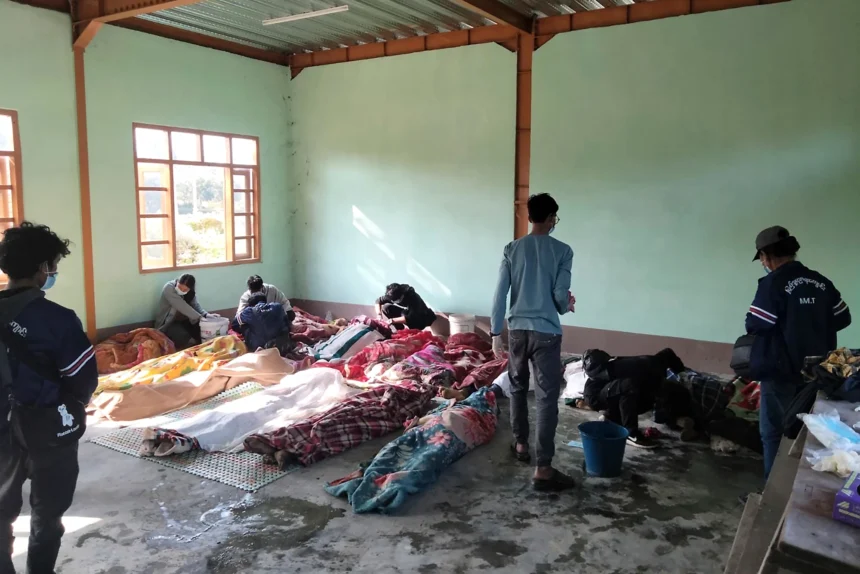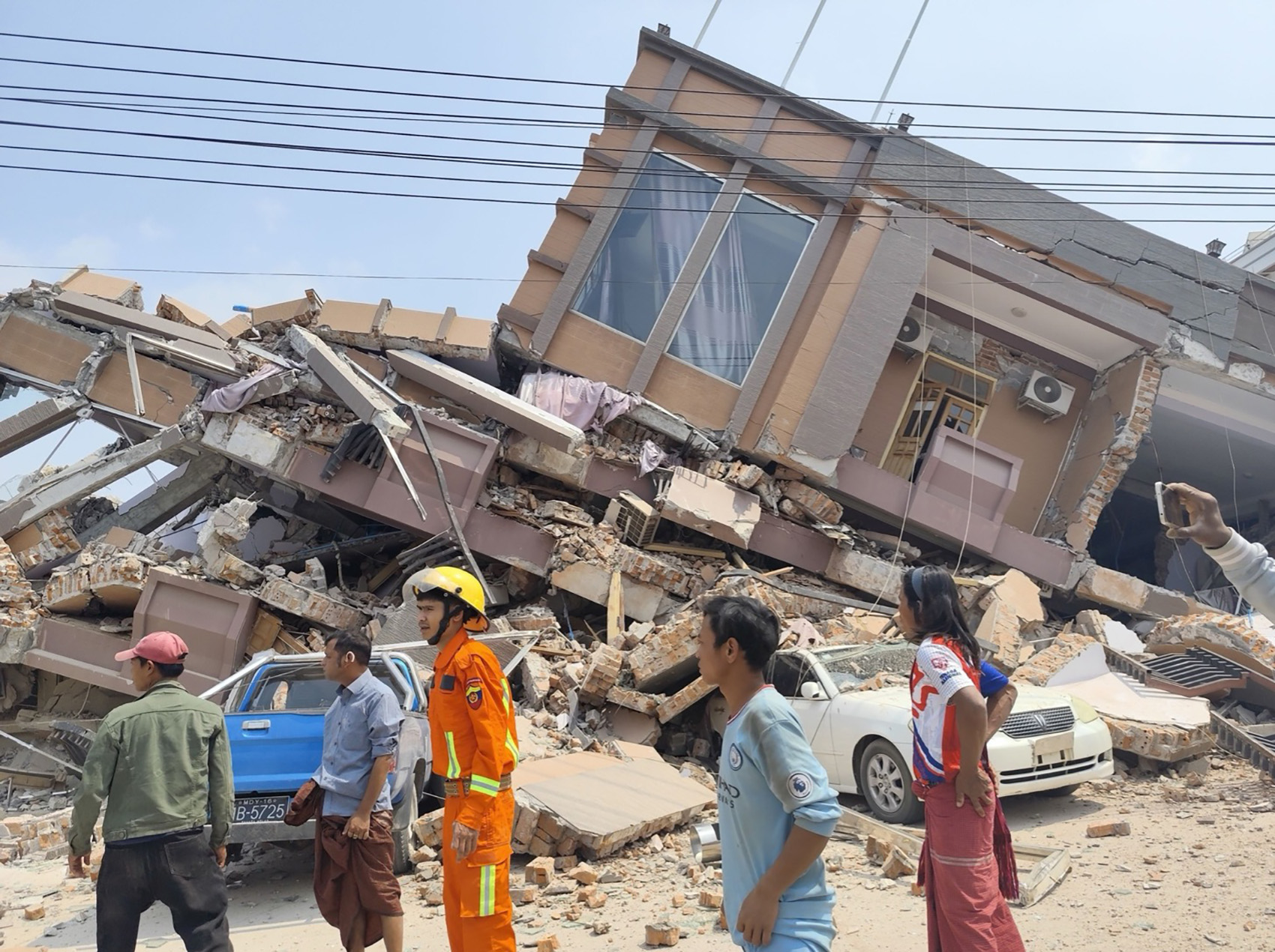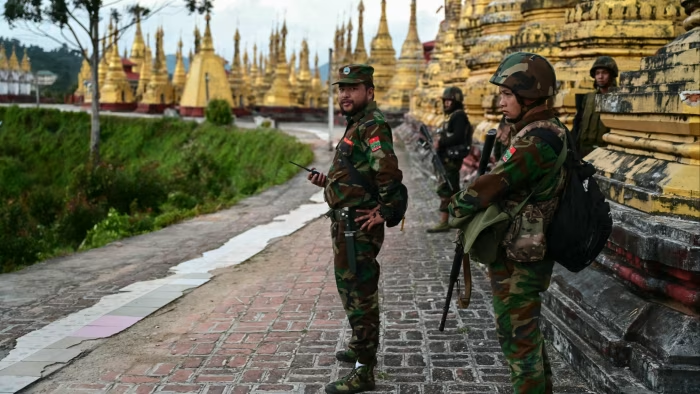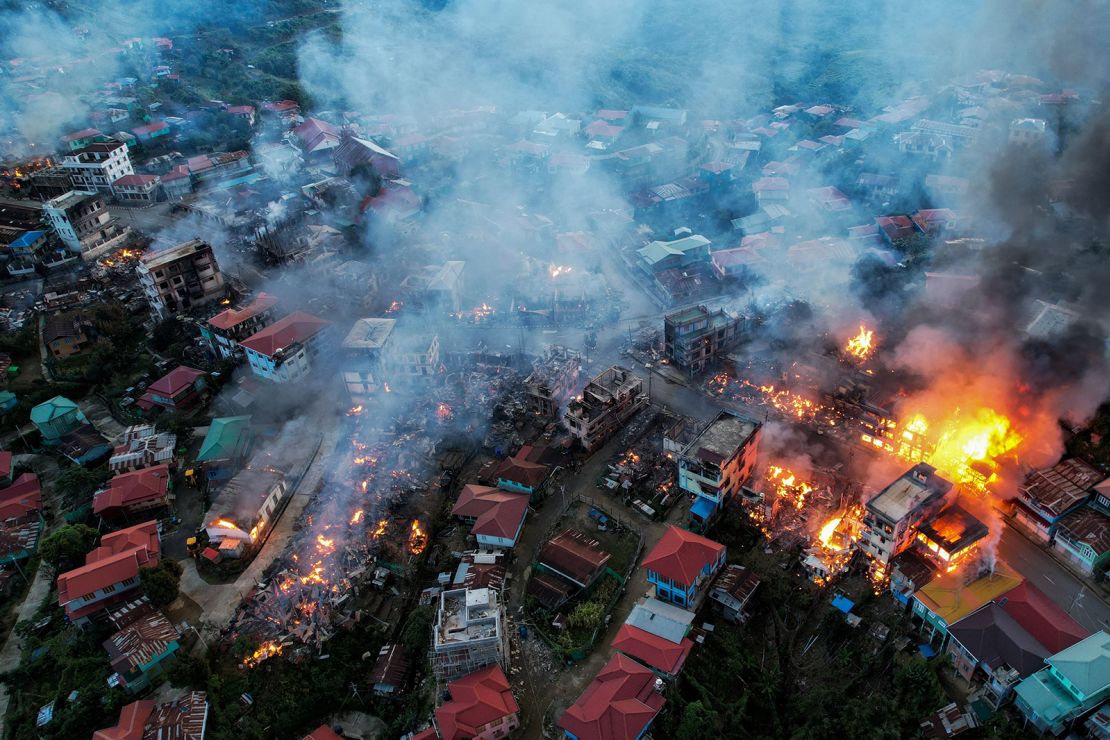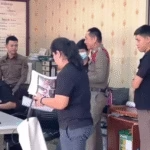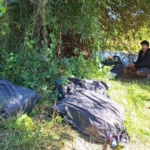DEPAYIN, Myanmar — Early on 12 May 2025, the quiet of Ohtainkwin village in Depayin Township, Sagaing Region, was broken by the sound of Myanmar military jets. Around 9:55 AM, bombs struck a school operated by the opposition National Unity Government (NUG).
At least 17 children and two teachers died, and 20 others suffered injuries, many of them severe. Local anti-junta groups recorded the attack, and the news spread quickly on social media.
This bombing came despite the junta’s extension of a ceasefire to 31 May after a deadly earthquake on 28 March. The airstrike, aimed at a school in an area controlled by resistance forces, highlights the military’s ongoing violence and raises urgent concerns about justice in Myanmar’s ongoing civil war since the coup in February 2021.
The school, a small building serving as a rare place of learning amid conflict, was full of children when the bombs landed. Witnesses described a scene of devastation: classrooms flattened, children’s bodies scattered among the remains, and parents grieving beside those lost.
“The first bomb hit the school directly,” one villager told Reuters, speaking anonymously out of fear. “A mother shielded her children from a second bomb, but shrapnel struck her.” The NUG, which tries to run services in resistance-held regions, warned that the number of dead could rise as rescue work continued with limited medical help.

Junta’s Killing Civilians
This airstrike is one of many attacks by the Myanmar military, or Tatmadaw, against civilians. Since overthrowing the elected government led by Aung San Suu Kyi on 1 February 2021, the army has waged a brutal campaign to crush opposition.
Their tactics range from targeting peaceful protestors to fighting armed resistance groups like the People’s Defence Force (PDF) and various ethnic organisations.
The military has made a habit of attacking schools, hospitals, churches, and camps for displaced people, using airstrikes and shelling to scare civilians in areas it does not control.
Reports from the Assistance Association for Political Prisoners (AAPP) show that the junta has killed at least 6,486 civilians since the coup, including 1,494 women and 751 children (up to April 2025). In 2024 alone, 1,824 civilians died, up from 1,639 in 2023, showing how the violence has grown.
The UN says more than 3.5 million people have been forced from their homes and over 18 million need aid. The conflict has spilt into neighbouring countries. More than 100,000 refugees have crossed into Thailand, where many live without documents and risk arrest.
Tens of thousands more have fled to Bangladesh, India, and China, often facing pushbacks or taking dangerous sea journeys that have cost over 800 lives since January 2023.
Myanmar Earthquake
The attack on the Depayin school, during a supposed ceasefire, shows the junta’s lack of respect for its promises. The ceasefire, announced by Senior General Min Aung Hlaing after a 7.7-magnitude earthquake that killed close to 2,900 people, was supposed to help aid reach those in need.
Even so, as Richard Horsey from Crisis Group said, “The regime continues to launch airstrikes, including in affected areas. That needs to stop.” The Three Brotherhood Alliance, a coalition of ethnic armed groups, also paused their offensives to help with earthquake recovery, but the military’s actions show it does not want to reduce fighting.
On 16 April, just two weeks after the ceasefire began, military jets bombed South Kan Ma Yaik village in Karen State, killing a pregnant woman and her unborn baby during the Burmese New Year.
China’s involvement in supporting the junta has come under more attention. As Myanmar’s biggest trading partner and main ally, China has provided the Tatmadaw with weapons and investment. While China was unhappy with the junta’s failure to bring stability, especially over scam centres that targeted Chinese citizens, Beijing now backs Min Aung Hlaing’s regime more openly.
China brokered a Ceasefire
In 2023, China quietly supported the Brotherhood Alliance’s offensive to weaken the military, but in 2024, it cut supplies to these groups at the border to stop further advances, worried that the collapse of the junta could spread chaos in central Myanmar.
In January 2025, China brokered a ceasefire between the Myanmar National Democratic Alliance Army (MNDAA) and the junta, yet airstrikes on resistance areas kept happening. Min Aung Hlaing’s recent meetings with Chinese President Xi Jinping show China’s wish to keep the military in place as a safeguard against instability.
The civil war that began after the 2021 coup has turned into a countrywide resistance. At first, millions joined peaceful demonstrations and the Civil Disobedience Movement (CDM) to call for a return to democracy. The junta answered with deadly force, killing protestors and arresting over 26,000 people, including journalists, activists, and political leaders.
By mid-2021, the armed resistance grew, with the formation of the PDF and alliances with groups such as the Karen National Union (KNU) and Kachin Independence Army (KIA). October 2023 saw a turning point when the Brotherhood Alliance launched Operation 1027, letting resistance forces take large areas, including the key town of Lashio. By April 2025, the junta held only the main cities, while border zones and the countryside were mostly controlled by opposition groups.
The scale of suffering is immense. In January 2025, a military airstrike on Kanan village in Sagaing killed 17 people, including nine children, at a church service. On 5 February, another airstrike hit a school in Daw Se Ei village, Karenni State, leaving four students dead and 27 hurt.
Middle School Bombed
On 5 September 2024, the military bombed a camp for displaced people in Pekon Township, killing eight children and two women. Rights groups have called these attacks war crimes and say they form part of the junta’s “four cuts” policy—trying to separate civilians from resistance groups by cutting off food, money, information, and recruits.
People escaping to Thailand speak of a life filled with fear. A middle-school teacher, now in a Thai border town, joined the CDM after the coup but had to flee when the junta targeted protestors. “I knew life would be hard, but if we don’t resist, there’s no future,” she told Reuters.
In Thailand, she survives by crocheting, earning under $10 a week, and depends on food donations. The UN says aid funding for Myanmar is much too low, with only 36% of the $994 million needed in 2024 received. A freeze on US aid in 2025 has made things worse, closing medical services in Thai camps that house over 100,000 refugees from Myanmar.
The world’s response has fallen short. The UN Security Council has not imposed an arms embargo, with Russia and China blocking stronger steps. ASEAN’s Five-Point Consensus, designed to stop violence and support talks, has achieved nothing.
Sanctions from the US, EU, and UK target the junta’s leaders and businesses, but without regional support, their effect is limited. UN Human Rights Chief Volker Türk has called for justice, urging countries to work with international legal bodies such as the Independent Investigative Mechanism for Myanmar. Amnesty International stressed that stopping impunity takes determined action and long-term commitment.
The bombing in Depayin is a harsh warning of the lengths the junta will go to hold onto power, even attacking the youngest and most defenceless. As more lives are lost and millions remain cut off from safety, the need to act grows stronger.
The children of Ohtainkwin, who died in a place meant for learning and safety, deserve justice. The international community must stand together by applying sanctions, stopping arms supplies, and backing Myanmar’s resistance to help end the suffering and bring hope back to a country in crisis.




